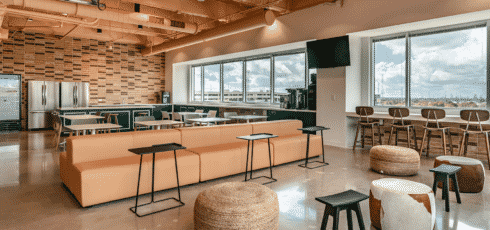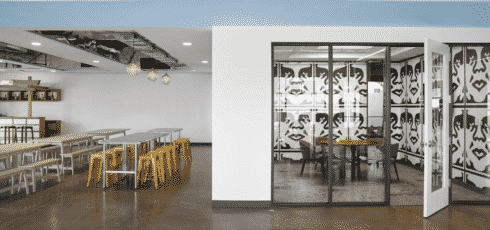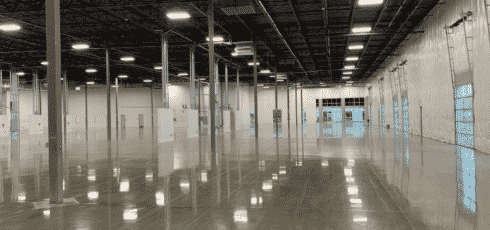Navigating and negotiating a commercial sublease agreement can be a confusing task. You may be familiar with residential subleases, but commercial subleases have extra technicalities and fine print that you need to watch out for. At AQUILA, we’ve negotiated hundreds of sublease agreements on behalf of our clients, and we know that it is important for you to have all the information you need before you begin the process of subletting your space.
Read Next: How to Sublease Your Office Space: An A-to-Z Guide to the Subleasing Process
In this article, we explain what a commercial sublease agreement is and the reasons you may consider subleasing your space.
What Is a Commercial Sublease Agreement?
A commercial sublease is an agreement between a tenant currently leasing a property, a new tenant looking for space, and the property owner.
When you sublease your space you are the sublessor (or sublandlord) and your new tenant is the sublessee (or subtenant). The subtenant resides in your space (or a portion of your space) for the remaining term on your lease (or whatever period of time is agreed upon, sometimes only a portion of your remaining lease term).
Read Next: 5 Reasons Your Sublease May Not Be Moving (And How to Move Forward)
Normally, you are still responsible for your lease payments so you must collect rent from your subtenant each month and still continue to pay your rent directly to the landlord.
You also need to be sure to read your lease carefully before you decide to sublease your space. Before you approach your landlord for approval, you need to understand your sublease rights to ensure there are no limits or consent issues. Usually, landlords will allow you to sublease your space but there are a few instances when there are restrictions.
When you’re ready to sublease your space you will need to list it on the appropriate commercial real estate sites and use marketing initiatives to get it moving.
Hiring a broker can make the subleasing process much easier and quicker. A broker can help you determine the best rate for your space, make sure it is positioned competitively, and bring years of marketing experience to the table. Additionally, a broker can help you navigate the complex negotiation process with both your landlord and potential subtenants.
Read Next: 5 Key Questions to Ask Before Hiring a Sublease Broker
Reasons You May Want to Sublease Your Commercial Space
Subleasing isn’t always the right option for everyone, but we’ve found subleasing can be a good alternative for tenants in the following situations:
1. You need to downsize your office space
Do you have too much space or space you aren’t using? If you need to downsize but still have term remaining on your lease, subleasing can be a great option. When you need to downsize, you can either sublease part of your space or your entire space.
Some tenants in this situation opt to sublease a portion of their current office, in order to avoid the complexities and expenses related to relocating. If you occupy separate floors or spaces, this can be a relatively simple process. You can also choose to sublease only part of your space. However, if your office is one contiguous space, it’s important to remember that you may have to pay additional construction costs to separate the space or be open to sharing your space with another company. Depending on your goals, it is important to market your space in the appropriate way.
On the other hand, if you want to vacate the space completely and look for new space or simply no longer require an office space, you might choose to sublease your entire space. This is a good option if you have a smaller amount of unused space or you need substantially different space. This is the most common approach when subleasing.
Read Next: How Much Office Space Do I Need? (Calculator & Per Person Standards)
2. You have more space than you need right now
Do you have space that you plan to use in the future but don’t need right now? If you’re a high-growth company, it can be smart to sign a lease for a larger space, but initially, you may not be using all of that space.
Subleasing your unused space can be a great way to save money and keep the door open to continue your growth. You can seek to find a short-term subtenant based on your growth projections and once you need the space, you can take it back and continue your lease.
This is a good option for high-growth companies that have found a space that they want to grow into in the long term. This way, your company doesn’t need to find new space and move every time you grow.
Read Next: Zello’s Office Solution: Selling, Leasing, and Subleasing on Sixth Street
3. You have outgrown your current space
Is your business growing rapidly? Are you running out of space? You may need to sublease your space and move into a larger space before your lease expires. This is common among start-ups and other high-growth businesses.
When you outgrow your space you can either lease additional office space or sublease your current space and move into a larger space. If you lease additional space, this can create a divide in your company if your employees are split across two locations. Depending on your culture and office dynamics, this can sometimes create communication and workflow issues. In most cases, you ultimately are occupying more space than you need due to the inefficiencies of being separated (two break rooms, additional hallways, and possibly two separate lease expirations).
By subleasing your current space and finding a new appropriately sized space to accommodate growth, you can avoid these headaches and possibly save money in the long run.
Read Next: 3 Things Startups Need to Consider Before Looking for Office Space
4. Your company is relocating or shutting down
Lastly, if your company suddenly needs to relocate or close its doors before your lease ends, you may need to sublease your space.
By subleasing your space in these situations you can avoid either paying double rent or paying rent on unused space. The first question many tenants ask when looking to relocate or shut down an office is: “Will my landlord let me terminate the lease?” The answer from the landlord is more often than not, a resounding “no,” or if they are to consider a termination it will require a hefty termination penalty. Typically the better solution is to sublease as the chances for a higher dollar recovery are greater.
Read our case study: Subleasing for StrongBox: Crafting a Creative Solution at Stonelake 6
To continue learning about the subleasing process, check out these other helpful articles:
- How to Sublease Your Office Space: An A-to-Z Guide to the Subleasing Process
- 5 Key Questions to Ask Before Hiring a Sublease Broker
- Why Use a Full-Service Commercial Real Estate Firm to Successfully Sublease Your Space?
- 5 Reasons Your Sublease May Not Be Moving (And How to Move Forward)
- How to Sublease Your Warehouse or Manufacturing Space
If you have more questions about subleasing, or are wondering if subleasing is right for your company, schedule a consultation with one of our expert tenant representation brokers today.











